Bangkok Car-Free Day 2012
In our Aug 17 issue, we asked, “What Really Pisses You Off Bangkok?” More than half of you picked traffic (57%) as your main grumble. That got us thinking about what it would take to fix your number one problem.
After all, we’re currently seeing more and more cars pouring onto our city’s streets (helped in part by government-sponsored B100,000 tax breaks). It appears our solution is to update the city’s infrastructure to make way for all those new cars, by building bridges, fly-overs and parking lots. This means pedestrians are forced to crawl, climb and duck past these cars in an attempt to keep the traffic moving. (Why don’t those two-legged shmucks buy a car already?) The end result is a gigantic traffic jam, terrible walkability, high pollution, high energy dependancy and a massive bill for all those infrastructure upgrades. Moreover, the traffic still sucks. That’s pretty much the model Bangkok is in right now—and its the situation that a lot of major cities like London, Singapore or Paris were facing 10 or 20 years ago.
The alternative solution that most of these cities went for was simple. Encourage people to stop using their cars. You build more and better public transport. You make sure walking is a better experience than driving (tear down pedestrian walkovers and let the cars wait at red lights, for example). You ensure public transport is a better experience than driving (let the cars sit in traffic jams while clean, air-con buses speed down their dedicated lanes). You basically say, “Hey, if you want to have your own personal vehicle, that’s fine, but we won’t sacrifice our city for your lifestyle choices.”
The problem with this alternative solution is it assumes you have a choice: either drive or use public transport. Many people in Bangkok don’t have that choice. Where they live, there’s no public transportation (or no good public transportation). As a result, you simply can’t ask those people to drive less. Here, we’ve listed why people are still dependant on their cars and what is currently being done to address that. Hopefully, it will inspire greater efforts to make Bangkok less reliant on cars so that this month’s Car Free Day is not just be a blip in a never-ending stream of traffic jams.
Problem #1:
There’s no BTS or MRT where I live or work
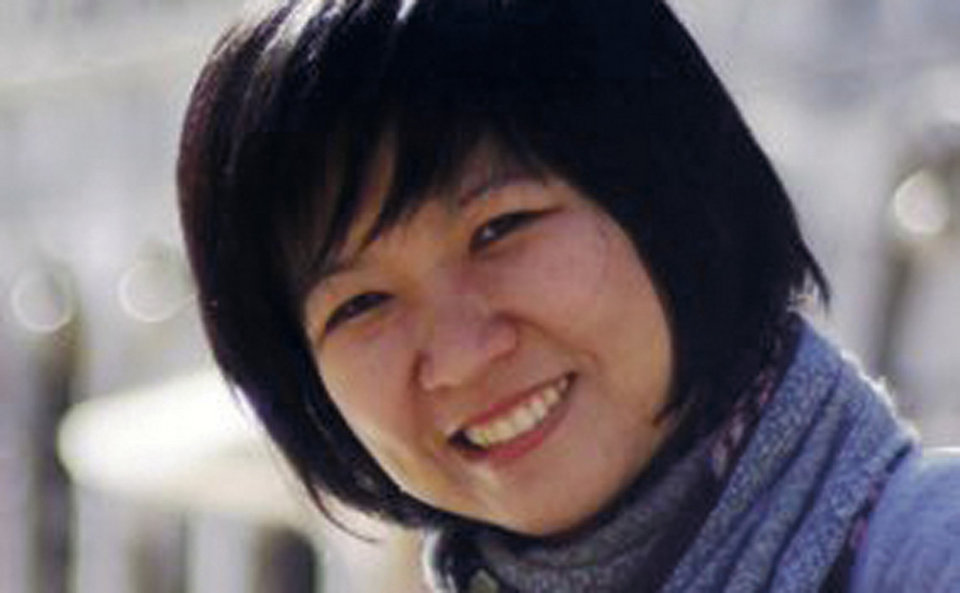 “I really want to use the BTS or MRT but there are no stations near where I live on Ekkachai Road. Instead I have to drive for over an hour to get into town when there’s traffic.”
“I really want to use the BTS or MRT but there are no stations near where I live on Ekkachai Road. Instead I have to drive for over an hour to get into town when there’s traffic.”
Pasaraporn Mongkolruengrawee, 34, business owner. Drives from Ekkachai Road to town 3-4 days a week.
What’s being done: The opening of the BTS Silom line to Bangwa, scheduled for Dec 5, is just the first in a raft of extensions to the existing BTS and MRT lines over the next few years:
2016: Green line (Mo Chit-Saphan Mai, 19km), Blue line (Hualamphong-Bang Kae, Bang Sue-Tha Phra, 27.2km)
Pink line (Carai-Meenburi, 21km)
Green line (Bearing-Samutprakarn, 16.8km)
2018: Orange line (Bang Kapi-Meen Buri, 24km)
2019: Orange line Talingchan-Cultural Center 17.5km) and the Purple line (Taopoon-Ratchaburana, 43km).
Why it’s not enough: The BTS and MRT keep pushing into the suburbs, but nothing is being done to improve transport along the busiest roads in town, such as Phetburi, Ekkamai, Sathorn, Rama 3 and Rama 9—not to mention the lack of interconnections.
Problem #2:
The park and ride service at the BTS and MRT is inadequate
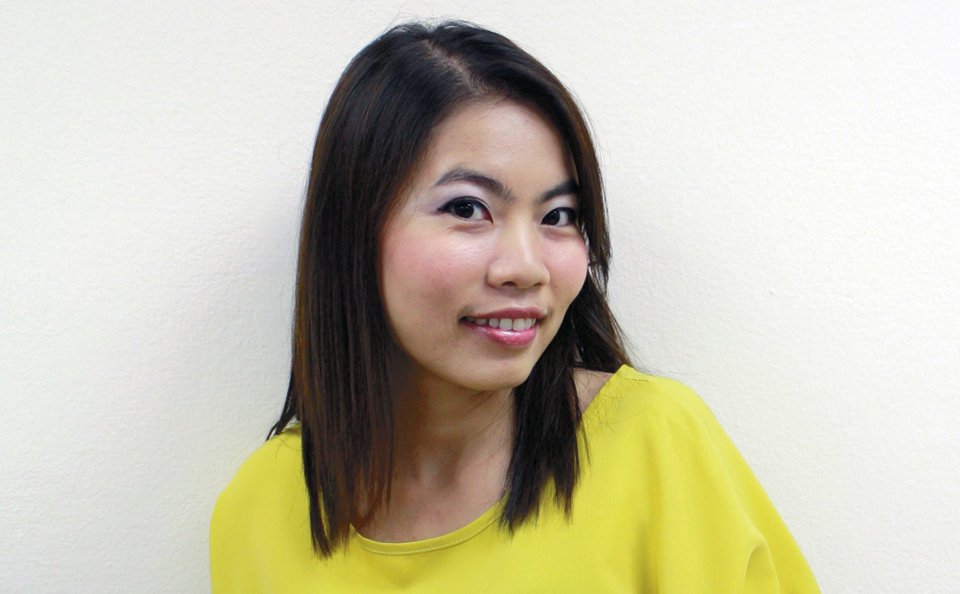 “The park and ride at Mo Chit is convenient for me but it’s prone to flooding during heavy rain. There are no basic facilities, like toilets, either. Also, it’s quite scary at night, as there are not enough security guards. They only show up at 1am to tell you that the parking lot is closed and that you cannot take your car home...Very helpful.”
“The park and ride at Mo Chit is convenient for me but it’s prone to flooding during heavy rain. There are no basic facilities, like toilets, either. Also, it’s quite scary at night, as there are not enough security guards. They only show up at 1am to tell you that the parking lot is closed and that you cannot take your car home...Very helpful.”
Wanwasa Kaewchompu, 33, loan officer.
Drives from Rangsit to Mo Chit and takes the BTS to get into town a couple of times a week
What’s being done: The Energy Ministry gave B43 million to the BMA and State Railway of Thailand to create the park and ride parking lots at MRT Bang Sue and BTS Mo Chit, which both offer free parking to 3,000 cars each. At MRT Ladprao there is space for 2,200 cars, at a fee of B10 per hour.
Why it’s not enough: Overcrowded parking lots lead to damaged cars and women don’t feel safe in them. The bigger problem, though, is that park and rides don’t even exist at most end of the line stations, including Bearing, National Stadium and Wongwian Yai.
Problem #3:
Walking to work or to the nearest public transport sucks
 “I hate that there are so many things on the sidewalk. For starters, motorcycles always use the pavement as a shortcut. Things only get worse when it rains, especially when the drains don’t work properly. There are too many stalls on my route, too. I don’t want to smell like grilled pork when I have a date that night!”
“I hate that there are so many things on the sidewalk. For starters, motorcycles always use the pavement as a shortcut. Things only get worse when it rains, especially when the drains don’t work properly. There are too many stalls on my route, too. I don’t want to smell like grilled pork when I have a date that night!”
Pannakan Jiramahakhun, 33, trade marketing.
Walks to and from MRT Ladprao daily.
What’s being done: Seemingly, nothing. The only plan to come out of the BMA for better walkability involved building a “Super Skywalk” that would run along parts of Rama 1-Sukhumvit, Ratchadamri and Phaya Thai, increasing the existing skywalk’s total length from 1.5km to 16km and ultimately 32km in a second phase. The project has since been quietly shelved.
Why it’s not enough: Pedestrian bridges offer terrible walkability: they’re disabled-unfriendly, they block views and they don’t offer comfortable walking because of the steep stairs you need to climb. According to experts, sidewalks should be 2.5 meters wide, with trees and disabled-friendly slopes (see below). Streets should have zebra crossings, not bridges.
Problem #4:
Our buses are uncomfortable and outdated
 “I would ditch my car if there was a nice public bus that didn’t look like a motorized wooden shack driven by idiots on amphetamines.”
“I would ditch my car if there was a nice public bus that didn’t look like a motorized wooden shack driven by idiots on amphetamines.”
Alisara Chirapongse, 26, online media manager.
Travels from Pattanakarn to Ploenchit daily.
What’s being done: Bangkok has a total of 7,500 buses, 3,509 of which are operated by the Bangkok Mass Transit Authority (BMTA) and 4,016 by private companies. Some 1,600 of BMTA buses are non-air-con. Finance Minister Kittirat attempted to revive the purchase order for 3,000 NGV buses from China at B3 million per bus but there’s been no news of a signed contract since.
Why it’s not enough: Bangkok needs more dedicated bus lanes so that people using public transport get rewarded with faster commutes, just like the BRT on Narathiwat (which is already packed during rush hour). The MRT, BTS and buses also need to share the same ticketing system, so that people who have to change systems three times to get to work don’t end up paying more than if they drove.
Problem #5:
Taxis won’t go where I live
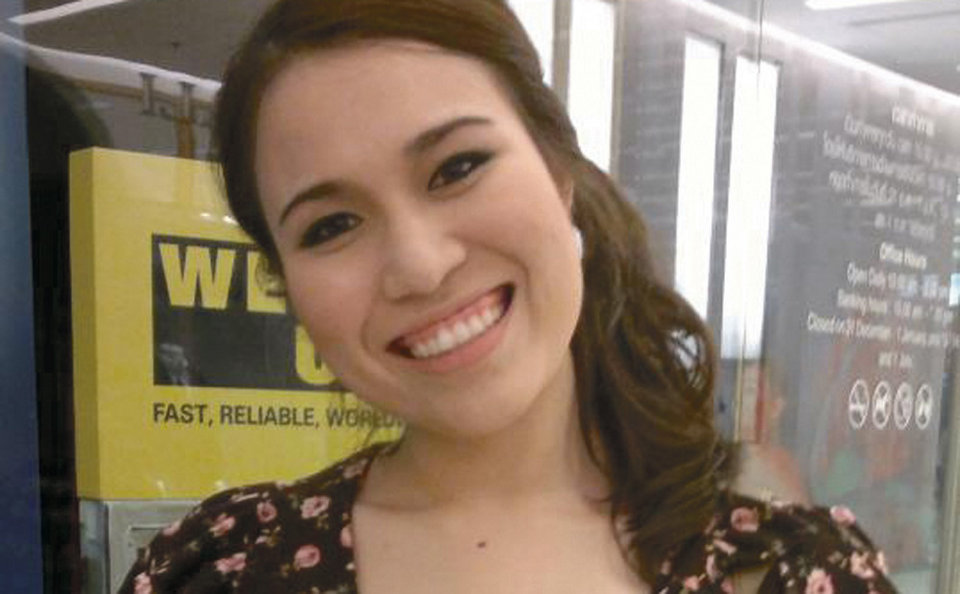 “I always have problems with taxi drivers. Whenever I tell them where I’m going, they reject me, giving me all sorts of reasons, whether it’s traffic or having to return their car. This one time I tried for hours before I eventually gave up trying to hail a taxi and had to spend another hour on a bus.”
“I always have problems with taxi drivers. Whenever I tell them where I’m going, they reject me, giving me all sorts of reasons, whether it’s traffic or having to return their car. This one time I tried for hours before I eventually gave up trying to hail a taxi and had to spend another hour on a bus.”
Praorujee,23, official receiver. Commutes from Ratchapreuk Road to Lad Prao on weekdays.
What’s being done: Since this month, taxi drivers can now be fined B1,000 if they reject a fare. Register your complaints by calling 1584.
Why it’s not enough: Taxi drivers don’t take cars off the road, obviously, but good cabs do encourage public transport because they can act as a relay from public transport to your final destination—or take you home when you finish late for those who came into the city without a car. To be fair, taxis in Bangkok are cheap and plentiful, but still reject fares, particularly those most likely to drive into town because they live further away.
Problem #6:
Riding a bicycle is hell in this town
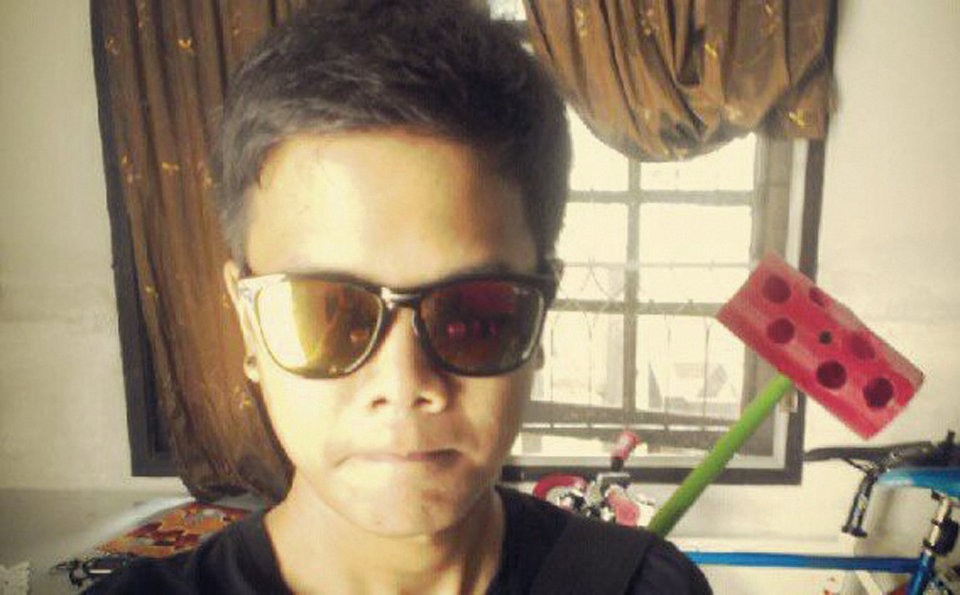 “I don’t understand why people who park their car in a bicycle lane don’t get a ticket from the police. Along Phra Athit Rd., I see everything from cars, metal fencing and even trash blocking the bike lane. The lane along the Ramintra expressway is also bumpy and gets slippery. There are no lights, which makes it even more dangerous. Bike lanes should be separated from the cars.”
“I don’t understand why people who park their car in a bicycle lane don’t get a ticket from the police. Along Phra Athit Rd., I see everything from cars, metal fencing and even trash blocking the bike lane. The lane along the Ramintra expressway is also bumpy and gets slippery. There are no lights, which makes it even more dangerous. Bike lanes should be separated from the cars.”
Prutikorn Prajansakunee, 26, corporate communications officer. Rides his bicycle to town every week.
What’s being done: Bicycle symbols were painted on roads and sidewalks, such as on Ratchadamri.
What we’ve got: Unconnected bicycle lanes scattered over town, many of which have fallen into disrepair or are regularly blocked. It’s still dangerous to ride a bicycle in Bangkok’s traffic and the sidewalk bicycle lanes are used by motorcycle taxis and occupied by street stalls.
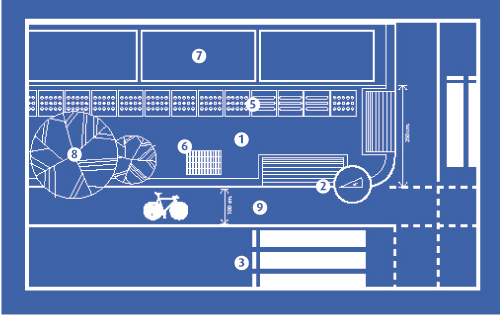
HOW TO Make the Perfect Sidewalk
1.The width should be at least 2.5 meters so that two wheelchairs can pass each other comfortably.
2. The gradient from the sidewalk to road level should not exceed 30 degrees.
3Zebra crossings (crosswalks) at all intersections and every 100-120 meters.
4. Walking is entirely at street level: no skywalks or pedestrian bridges.
5.The Braille block path (for the blind) should be free of obstacles and consistently warn of intersections.
6. Vents in grates should be under a 1/2 inch and perpendicular to the direction of travel so that wheels on strollers or wheelchairs don’t get jammed in the grates.
7. Street vendors should have their own designated space, leaving the sidewalk to pedestrians.
8. Ideally, sidewalks should benefit from some kind of shade, either from trees or awnings. Trees also process carbon dioxide.
9. Bicycles lanes should be on the road, not the sidewalk. They should be one meter wide.
10. Surfaces should be smooth and free of any holes likely to make people trip.
Q&A: Thana Vichaisarn
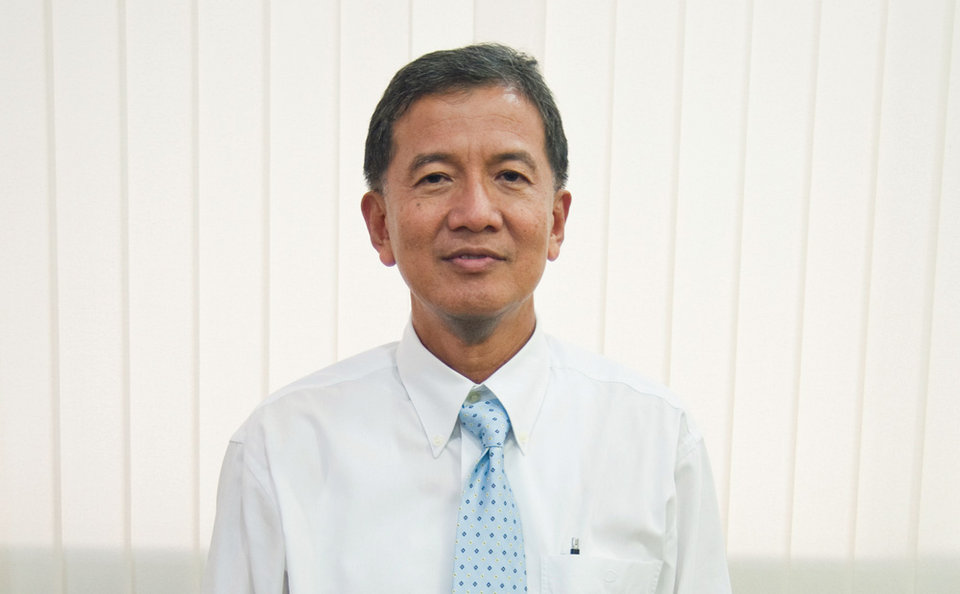
Director General of Traffic and Transportation Department, Bangkok Metropolitan Administration (BMA)
Why does Bangkok have so many traffic issues?
It’s down to many factors. Bangkok has lots of laws regarding traffic issues, but the blame must go to both law enforcement officers and to the people who infringe them. We need to promote more moral and social responsibility. We must respect each other’s rights, and then we’ll have less traffic troubles. The BMA must make sidewalks more accessible for wheelchairs, introduce more lanes for bicycles, and ensure motorcyclists don’t take advantage of them. Sidewalks belong to pedestrians, not motorcycles or vendors. Law enforcement officers have a lot to handle so it’s better if everyone took more responsibility for their own actions.
Are there any plans for reducing the number of cars on Bangkok’s roads?
For the short-term we are focused on managing our roads. Hundreds of thousands of new cars are rolled out every year and it’s not possible to build new roads to accommodate all these cars. We need to better manage the existing roads to optimize their use. We’ve already installed LED road signs in 50 areas to keep people updated on traffic conditions. We also hope to develop a mobile phone app with iTIC (Intelli gence Traffic Information Center) to deliver commuters real-time traffic information to help them decide their route. We also just installed detectors which calculate the quantity of cars at 60 junctions throughout Bangkok so that traffic lights best meet the needs of the city. As for long-term plans, we aim to expand our mass transit system, namely the BTS and MRT, to cover all of Bangkok. We also have a plan to build a small monorail system covering the Soi Rangnam-Victory Monument-Dindaeng triangle now that the BMA has moved headquarters to Dindaeng. Finally, we plan to expand transport along the Sansaeb Canal further downstream to Minburi, too. We’ve already built the pier and we’re just waiting to test the route soon.
Are there any more plans to make Bangkok more bicycle-friendly?
We’re going to install a Bangkok public bicycles for rent scheme like what they have in Europe. People will use a smartcard that enables them to refill their money online. There will be 50 parking spots and about 300 bicycles available in Silom, Sathorn, Wireless Rd. and Pathumwan areas. The project just needs final approval. Hopefully we can implement it soon. But making Bangkok a bicycle-friendly city is a difficult task. Introducing proper bike lanes isn’t something that everybody is happy about, especially drivers. What we need is more time to open up people’s minds to such ideas.
Advertisement















